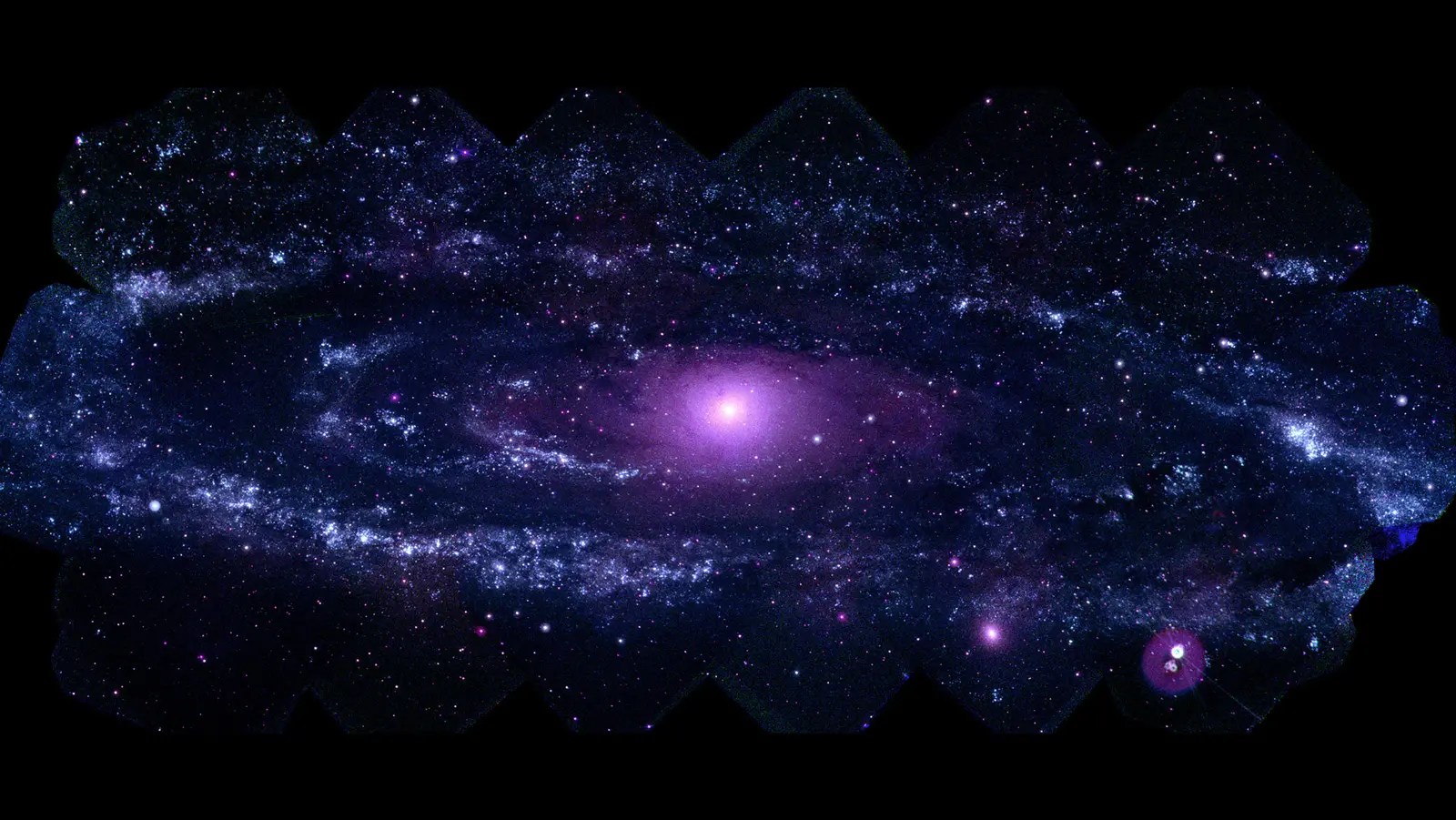Large Scale Structures
The nearly 10,000 galaxies captured in the Hubble Ultra Deep Field may look like they’re randomly scattered across the sky. But galaxies, including the Milky Way, are often part of larger structures and superstructures in space. Galaxy groups and clusters are collections of galaxies bound together by gravity. They are building blocks for the larger-scale structures of the universe.
Galaxy Groups
Galaxy groups generally hold 100 or fewer galaxies. The Milky Way and its closest neighbors, including the Andromeda galaxy, live alongside over 50 other galaxies within the Local Group.
Galaxy Clusters
Galaxy clusters contain many more galaxies, from hundreds to thousands. The Coma cluster, for example, houses over 1,000 individual galaxies and stretches over 20 million light-years across.
In addition to their galaxies, these clusters also contain a lot of hot gas – tens of millions of degrees – and abundant amounts of dark matter, an invisible substance that scientists know must exist but have yet to identify.
Superclusters
Superclusters are large collections of galaxy clusters, groups, and individual galaxies that are typically not gravitationally bound to each other. The Local Group, containing the Milky Way, is located on the outer edges of the Laniakea supercluster.
The Intergalactic Medium
The intergalactic medium is the gas and plasma – a mixture of electrons and atoms with an electric charge – found in the space between galaxies. It’s extremely hot, reaching millions of degrees, but it’s also very thin, only about one atom per cubic foot. For comparison, the “empty” space between stars may have 1,000 atoms per cubic foot. So, while the medium is hot, it’s so spread out that it’s dimmer than stars and other light-emitting matter within galaxies. This makes it difficult to detect.
Much of the intergalactic medium is made up of hydrogen and helium, the pristine gas left over from the big bang. But over cosmic history, the amount of heavier elements in the medium has increased. These elements include oxygen, neon, magnesium, silicon, and sulfur, and they are produced in stars as they burn and evolve. Supernovae, the explosions that mark the end of some stars’ lives, eject these elements into the medium.
Galactic Walls
Groupings of superclusters can form walls or sheets of galaxies. These walls are likely the largest-known superstructures within the observable universe. They can stretch hundreds of millions of light-years across but are relatively thin – only about 20 million light-years deep.
The first galactic wall astronomers discovered, called the Coma Wall, is about 500 million light-years long, 16 million light-years deep, and 300 million light-years away. Scientists have since identified additional walls, most notably the Sloan Great Wall, which spans about 1.4 billion light-years.
The Cosmic Web
Galaxies, galaxy groups and clusters, superclusters, and galactic walls are arranged in twisting, threadlike structures called the cosmic web. The web forms as the gravitational attraction of the universe’s matter draws larger and larger objects together. This leads to concentrations of galaxies with voids of space in between, as if the galaxies were resting on empty bubbles. Where those concentrations intersect, they form larger structures like clusters and walls. The cosmic web forms a sort of scaffolding that cradles everything that exists within the universe.
































